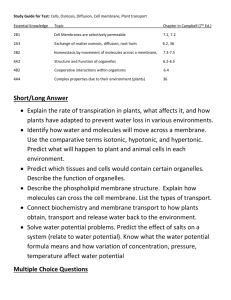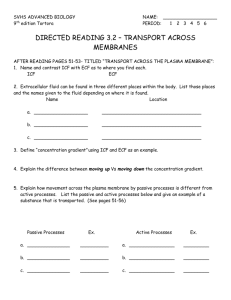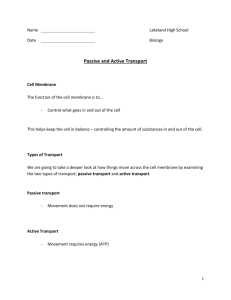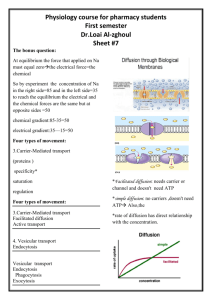Cell Membrane Physiology
advertisement
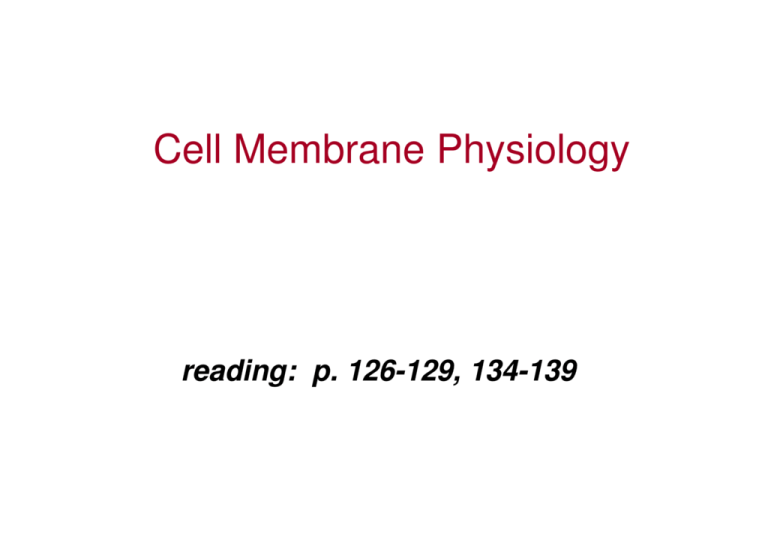
Cell Membrane Physiology reading: p. 126-129, 134-139 Review: Table 3.1, pp. 50-52: Plasma Membrane • Separates intracellular & extra-cellular spaces • Regulates entry & exit of substances • Referred to as the Fluid Mosaic Model Membrane Function: Transport • Selective permeability 1) Passive transport (no energy) - simple diffusion, via gradients - facilitated diffusion, via carriers 2) Active transport (energy) 3) Bulk transport Passive Transport: Simple Diffusion Need: – Concentration gradient – Permeability to the diffusing substance Gradients Types: concentration, electrochemical, pressure, thermal Rate of diffusion depends upon: 1) Magnitude of concentration gradient – Driving force of diffusion 2) Permeability of the membrane – Neuronal cell membrane 20x more permeable to K+ than Na+ 3) Temperature – Higher temperature, faster diffusion rate 4) Surface area of the membrane – Microvilli increase surface area Passive Transport: Active Transport 1) movement of molecules and ions against their concentration gradients 2) uses specific protein carriers 3) requires ATP 4) 2 types: primary, secondary Primary Active Transport 1) Molecule or ion binds to carrier site 2) Binding stimulates breakdown (hydrolysis) of ATP 3) Conformational change moves molecule to other side of membrane. Thus, direct use of ATP Primary Active Transport: + + The Na - K Pump An exchange pump ♦ (high [K+]) 3 Na+ out for every 2 K+ in ♦ Energy is used to move ions against their gradients ♦ (high [Na+]) Secondary Active Transport ♦ Coupled transport ♦ Energy for uphill movement of glucose is obtained from transport of Na+ down its [gradient] Thus, indirect use of ATP (to maintain Na+ gradient) ♦ Cotransport ♦ Countertransport Bulk Transport • Many large molecules moved at the same time Figure 3.4, p. 54





